A Dormitory for Migrant Workers, as I Remember It
Original Drawing
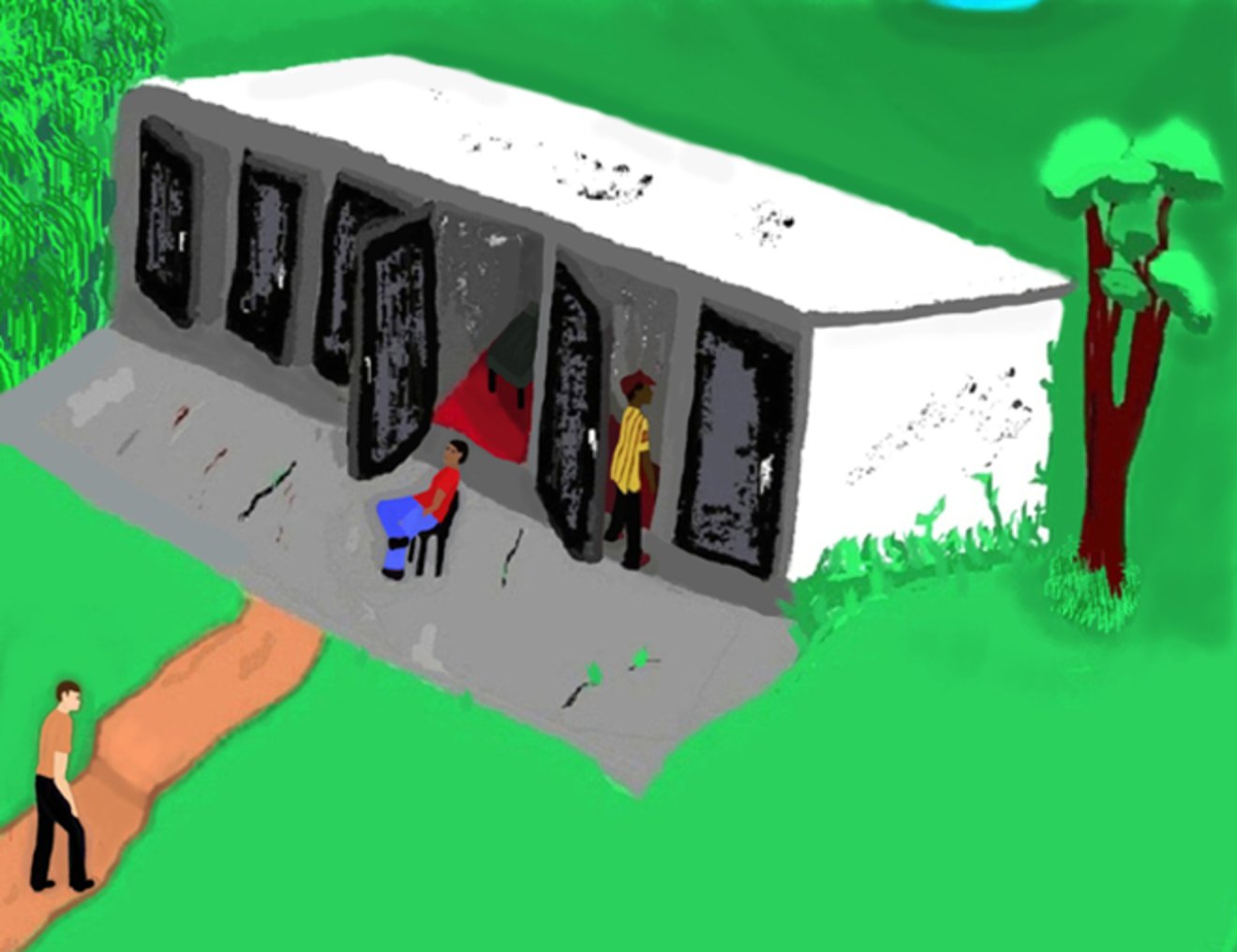
I spent my earliest years in a New York (USA) farm community. The rhythm of daily activity was determined by the seasonal ebb and flow of life. For schools, this meant class size swelled with the coming of spring, when children of migrant workers registered in local districts. These students sat at desks with the rest of us, but weren't really part of the class. We all knew they were temporary, and that their academic skills would generally reflect their transient status.
One summer day, when I was walking with an adult relative, I passed what looked like a dry gully. At the bottom of the steep slope was a concrete, slab structure. Men walked about, in front of the building. My adult companion explained that this was a residence for migrant workers. The starkness of their dormitory made an indelible impression on me.
Not long after this sighting, my grandfather, who owned a large farm, recruited me to pick strawberries. There must have been a harvest crisis, because he never asked me before or after that day to work on the farm.
Many laborers were in the field with me. In the space of a few hours, I got a sense of what it was like to pick fruit, with the sun shining on a shadeless expanse, and no water in sight, except for the contents of a warm mason jar far off on the back of a flatbed truck.
Migrant Farm Workers, A Photo Essay.
All photos included in this essay are from Wikimedia Commons. Some pictures are not linked to a source because their captions contained racist language. This, in itself, was sobering for me.
The picture above, entitled "Pea Pickers", was taken by the legendary Dorothea Lange, in Nipono, CA, on behalf of the US Farm Security Administration (1936). Lange traveled across the country during the Great Depression and documented the experience of families that had been uprooted. Her pictures became a visual history. They captured an era, particularly the struggle of those displaced by the environmental catastrophe of the Dust Bowl. Public domain.
Dorothea Lange took the photo above for the US Department of Agriculture. The caption under the picture indicates it was a segregated housing section for cotton pickers. There was a separate housing section for whites that looked exactly the same. The picture was taken in 1940, at Cortar Farms in Pinal County, AZ. From the National Archives Administration. Public domain.
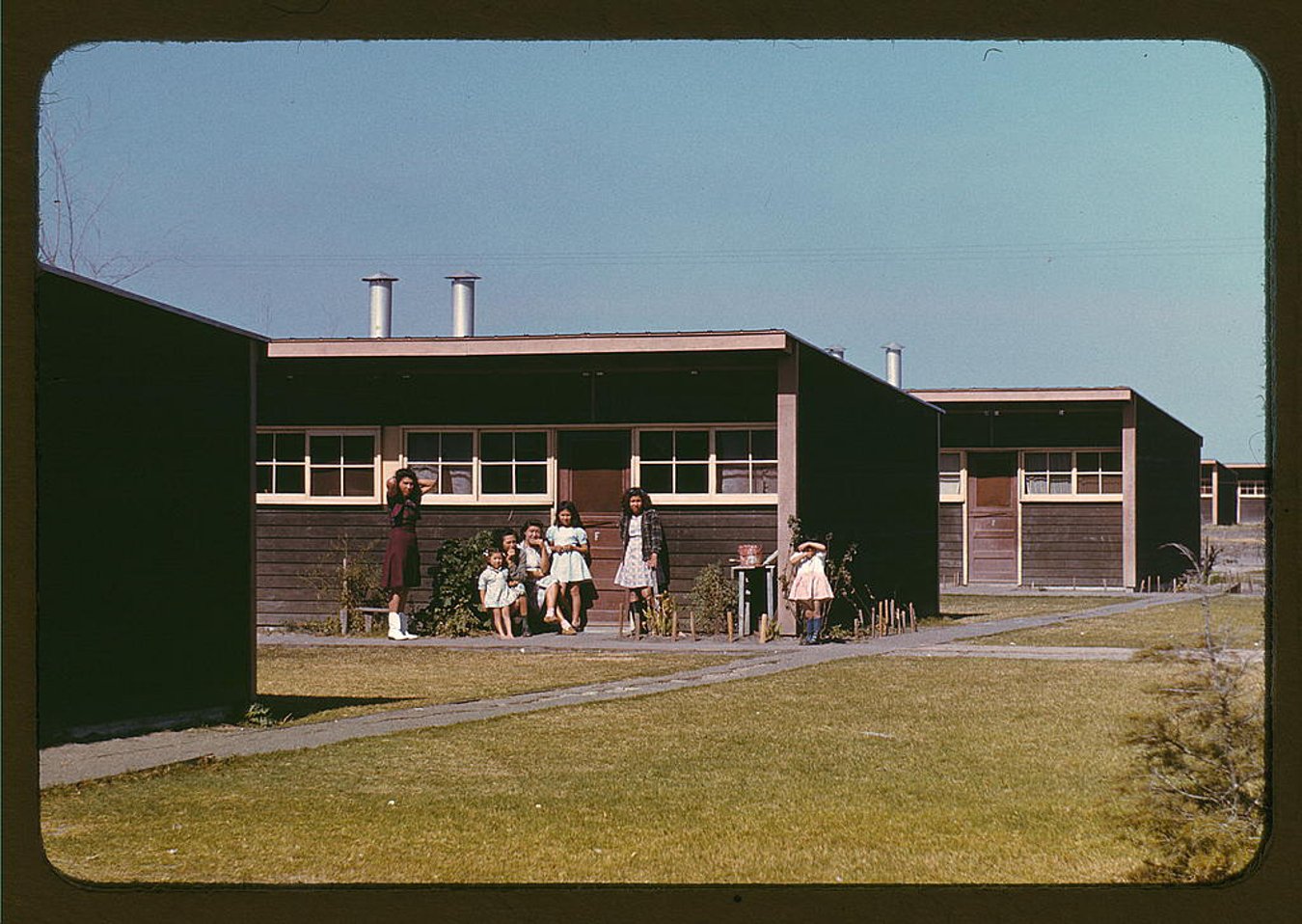
The picture above, taken by Arthur Rothstein, shows children of migrant workers in front of their row houses. The picture was taken in 1942 for the US Farm Security Administration at a labor camp in Robstown, TX. Public domain.
These dwellings (photo above) for farmworkers, in Belle Glade, FL, were condemned as uninhabitable. The picture was taken by Marion Post Wolcott, in 1940, for the US Farm Security Administration. Public domain.
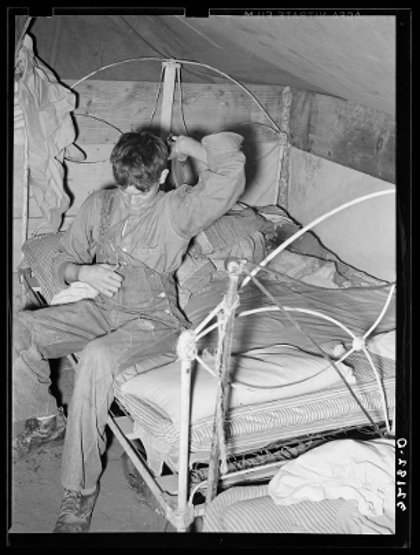
The picture above was taken by Russell Lee at a camp for migratory workers in Harlingen, TX (1939). According to the caption, the child is putting on overalls and is living in a tent. The picture was shot on behalf of the US Office of War Information and is in the public domain.
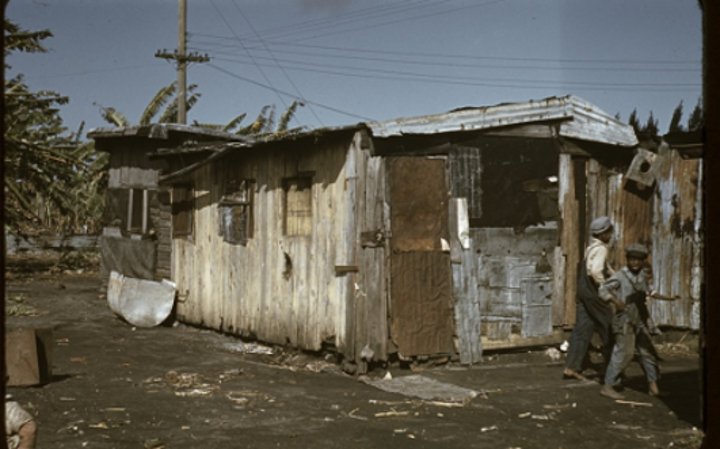
It's hard to tell if the people in the foreground (of the picture above) are boys or men. They are standing outside housing for migrant workers in Belle Glade, FL, 1939. The photo was taken by Marion Post Wolcott on behalf of the US Farm Security Administration, 1939. Public domain.
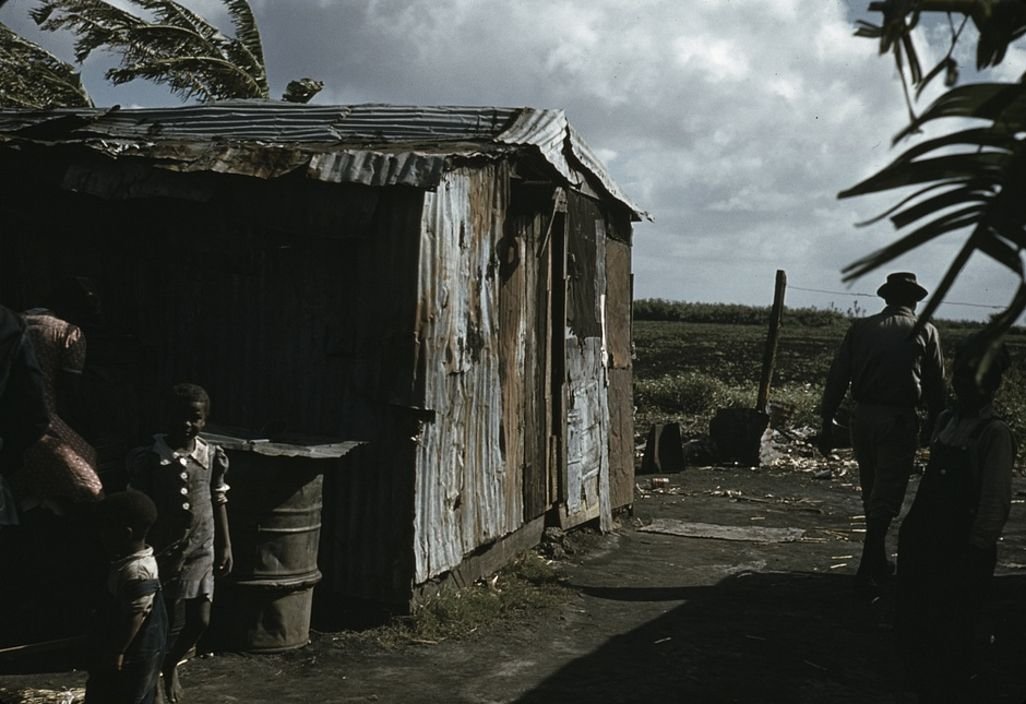
Another picture by Marion Post Wolcott at the Belle Glade, FL, camp for migratory farmworkers. This family was photographed in 1944. The photo was released by the US Office of War Information. Public domain.
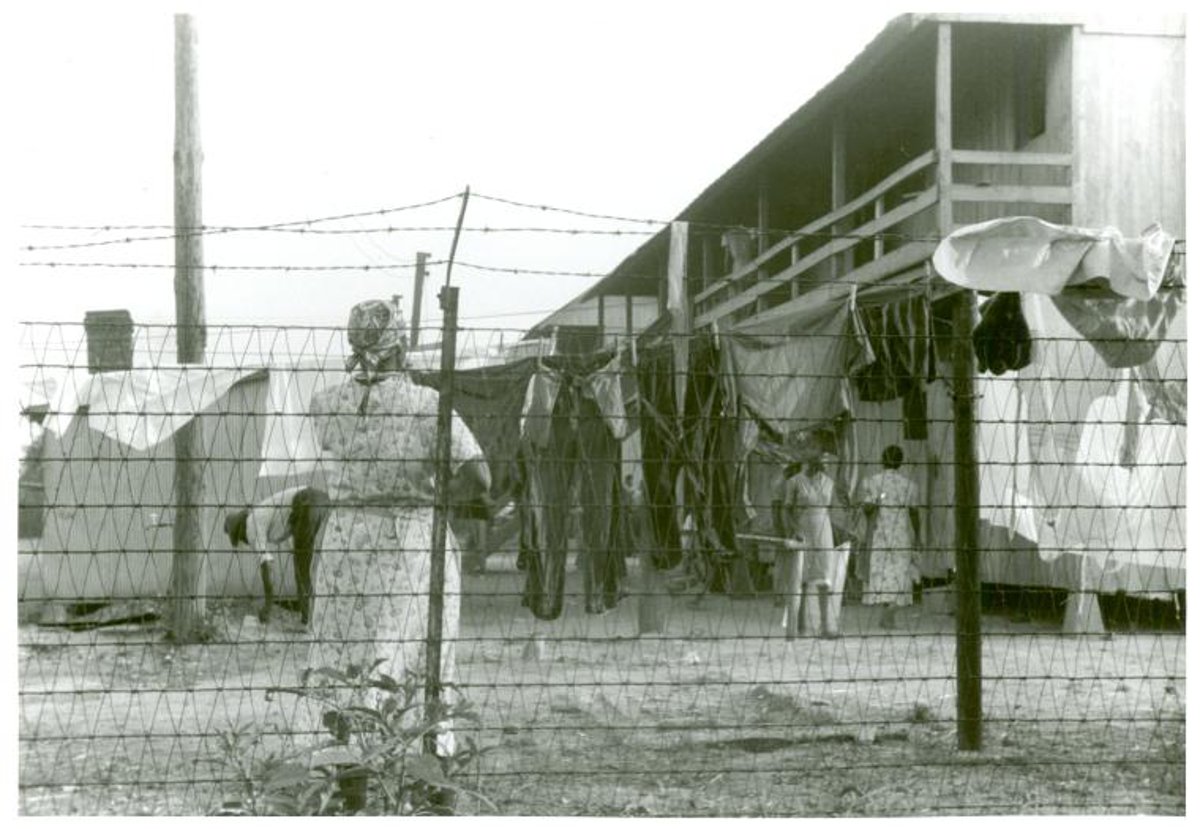
This photo, of a barbed-wire-enclosed camp for migratory workers, was taken by Jack Delano at the Cannon Company in Bridgeville, DE. The photo was released by the US Farm Security Administration in 1944. Public domain.
This photo, by Dorothea Lange, was taken in San Joaquin Valley, CA, in 1953. The labor camp was established for pea pickers. The field on which they worked can be seen in the distance. The large tent in the picture was the temporary school set up for the children. According to the caption associated with this photo, the shot was taken as Ms. Lange looked down from a water tower. Photo was released by the US Farm Security Administration. Public domain.
Housing Migrant Workers Today: Meeting Challenges
According to the American Public Health Association there is no way to ascertain how many people work with migrant and/or seasonal status. The Association estimates the number to be between 1.6 and 5 million. One issue facing these workers is housing. A PEW Charitable Trust Report describes numerous state and federal regulations that mandate minimum housing standards. These regulations, however, are not strictly enforced. The report indicates, for example, that between 2005 and 2016, not one citation for housing violation (for migrant/seasonal workers) was issued in the state of Texas. The problem of sub-standard housing is compounded by fear. If a complaint is not lodged, an investigation cannot go forward. Workers are afraid to complain because they may not only lose their income, but also their shelter.
Climate Change and Housing for Migrant Workers
It is predicted that with climate change will come increased challenges to migrant/seasonal workers in the future. Climate-related pressures on agriculture are projected to have a negative impact on livestock and crops. This will not only affect employment opportunities and patterns for migrant workers, but will also add cost pressures on producers, who will look to cut overhead, including expenses for housing and services.
The trend in housing for migrant/seasonal workers is to have workers rent off-site accommodations, at free-market rates. Given the limited resources of workers, this free--market housing will most likely lack many of the essential qualities recommended by WHO: protect workers from communicable diseases and injury; minimize psychological stress; protect those who are identified as at risk; and allow access to healthcare, work and essential services.
Other Effects of Climate Change on Migrant Workers
In addition to housing issues, the Worldwatch Institute cites a number of studies that suggest rising temperatures will lead to an increase in heat related illness, HRI, for agricultural workers. One NCBI Journal report describes a rise in HRI already evident in Oregon. The report indicates that outdoor workers have a particular vulnerability to climate change. Those workers who are paid by the piece, rather than by the hour, run an even greater risk because of their reluctance to take breaks, cool off, and hydrate.
Another anticipated challenge that will confront agricultural workers, because of climate change, is an elevated risk of contracting a vector-borne disease (caused by insects or parasites). This increase will be a consequence of prolonged growing seasons, and also of exposure to pathogens that are newly introduced into regions. Workers who handle livestock, particularly those who are involved in the slaughter of animals, will run a special risk.
Please note: the picture at the top of the page was derived from a drawing I did for a self-published book. I found that book to be unsatisfactory, so it is now off the market. The modified picture (shown on this blog) will appear (I hope) in my upcoming book, Arrows Axes and Scythes. There are certainly to be more modifications.

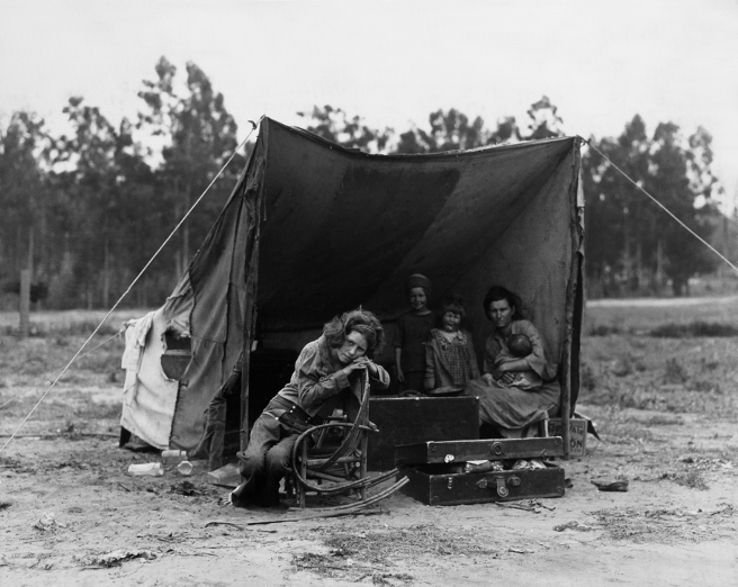
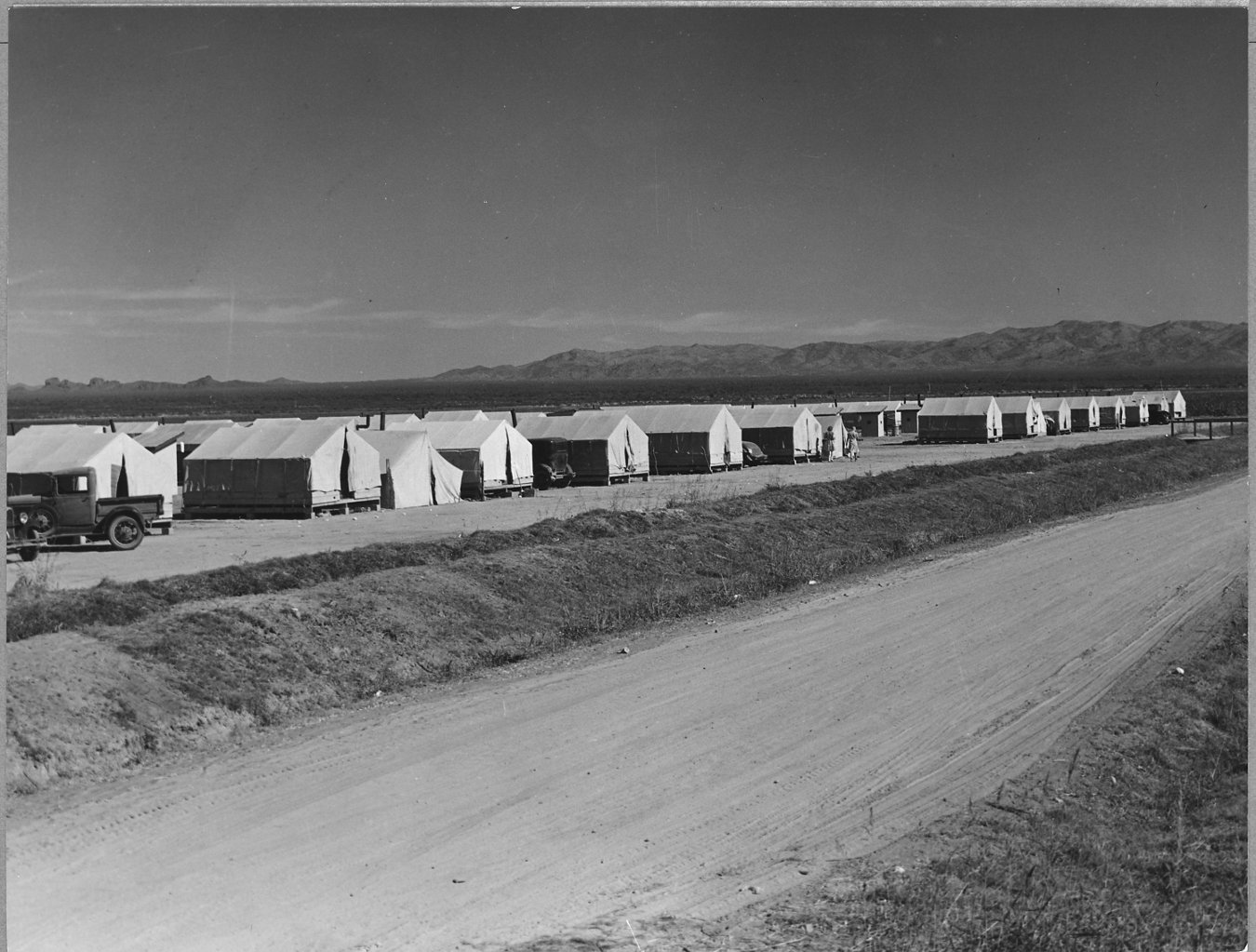
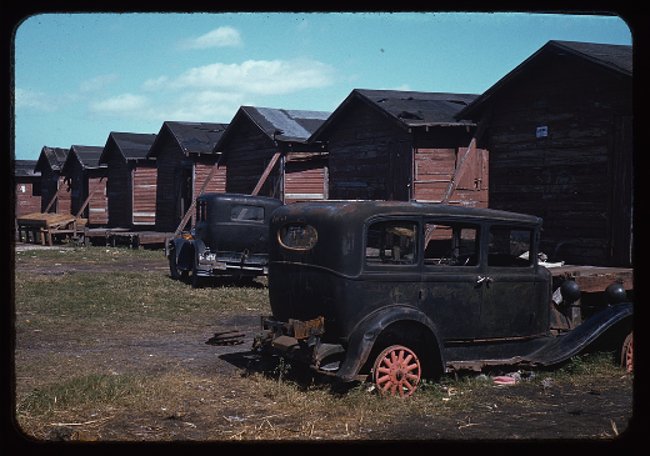
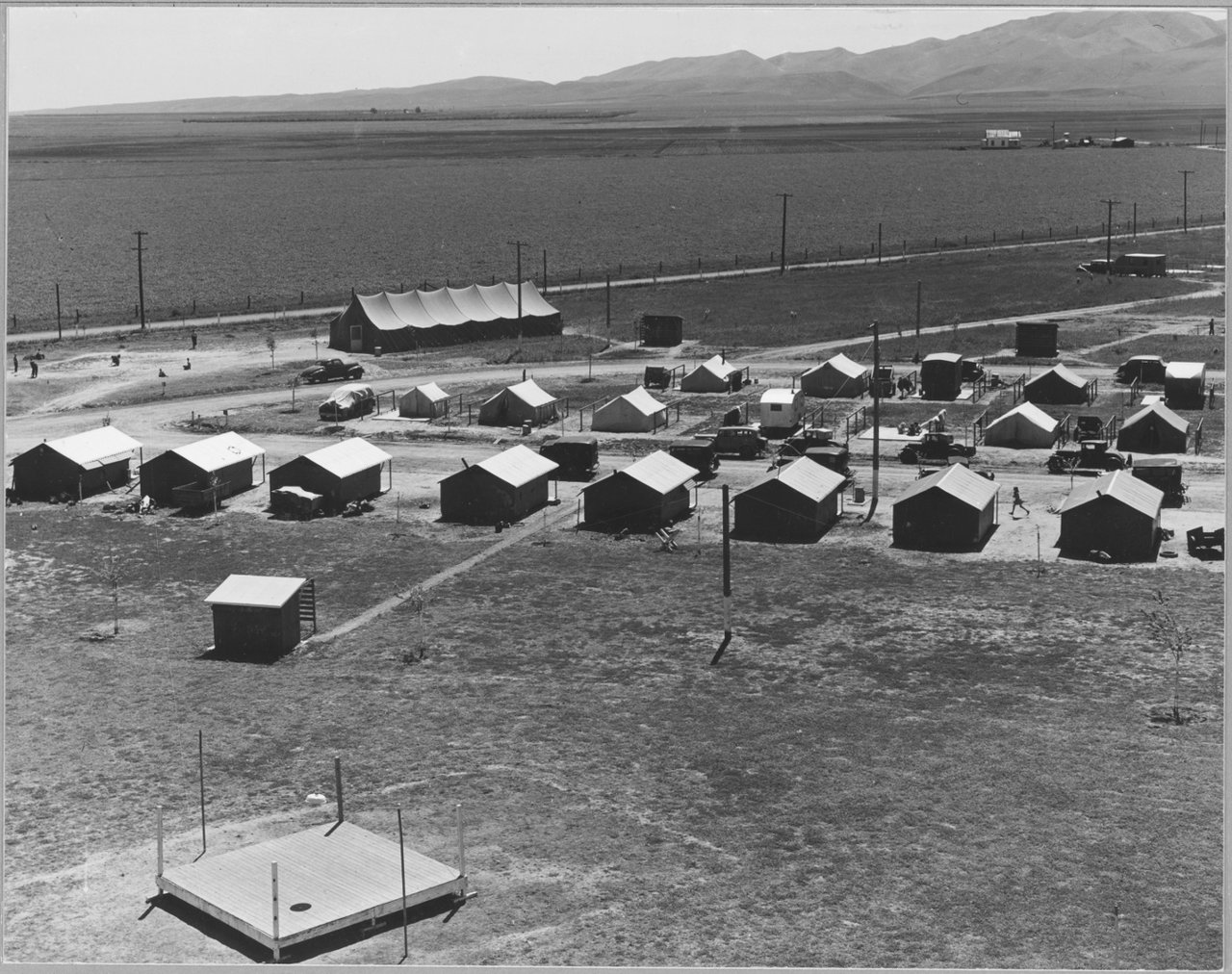%2C%20Dorothea%20Lange%2C%20view%20from%20water%20tower%201953.jpg)